The new Trek Domane was launched a few weeks ago. It’s a ‘road bike’ but don’t let that title limit your thinking. With clearance for up to 38mm tyres* and a list of other features, it will also serve you well on the gravel and other rough stuff…
– Part of an ongoing review by Rob Arnold
Review bike details
- Trek Domane SLR7 eTap with SRAM Force AXS and Bontrager Aeolus Pro 37 wheels
- Colour: Project One (‘Deep Smoke’ with spectrum logo)
- Size: 54cm
- Cost: AUD$11,999
- For more: trekbikes.com
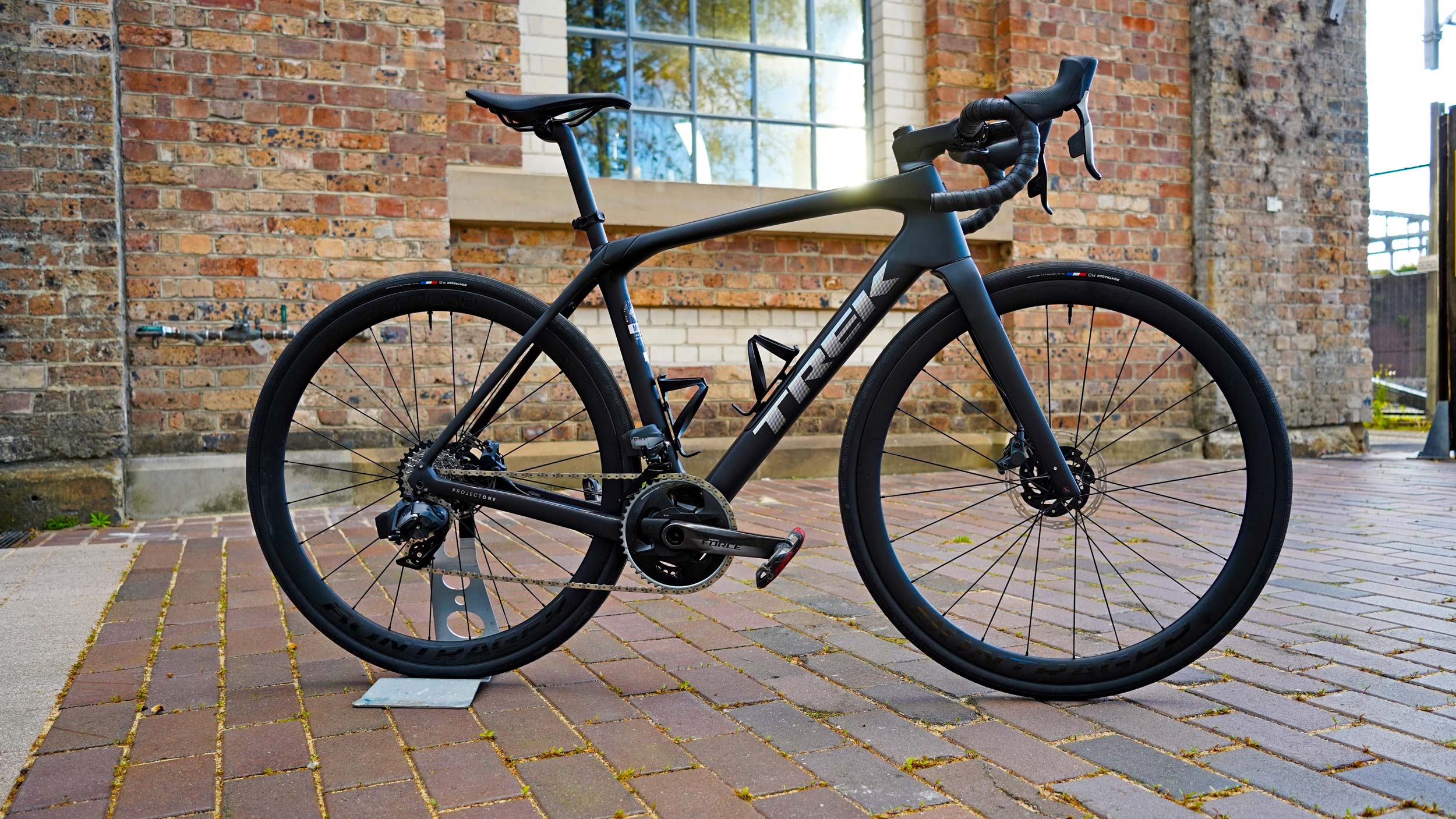 One of the key selling features of the Trek Domane is the IsoSpeed “comfort technology”, as the company calls it. There’s a neat new magnetised fitting that neatly covers that detail of the frame (see below) and that’s really the only reason I know that the “decoupler” is even on the bike.
One of the key selling features of the Trek Domane is the IsoSpeed “comfort technology”, as the company calls it. There’s a neat new magnetised fitting that neatly covers that detail of the frame (see below) and that’s really the only reason I know that the “decoupler” is even on the bike.
Trek does explain exactly what the IsoSpeed does and I’ll be sure to look it up at some point in what is an ongoing review of ‘Gen 4’ Domane SLR bike. For now, however, after having ridden it exclusively for over a month, I’ll leave that detail until another time.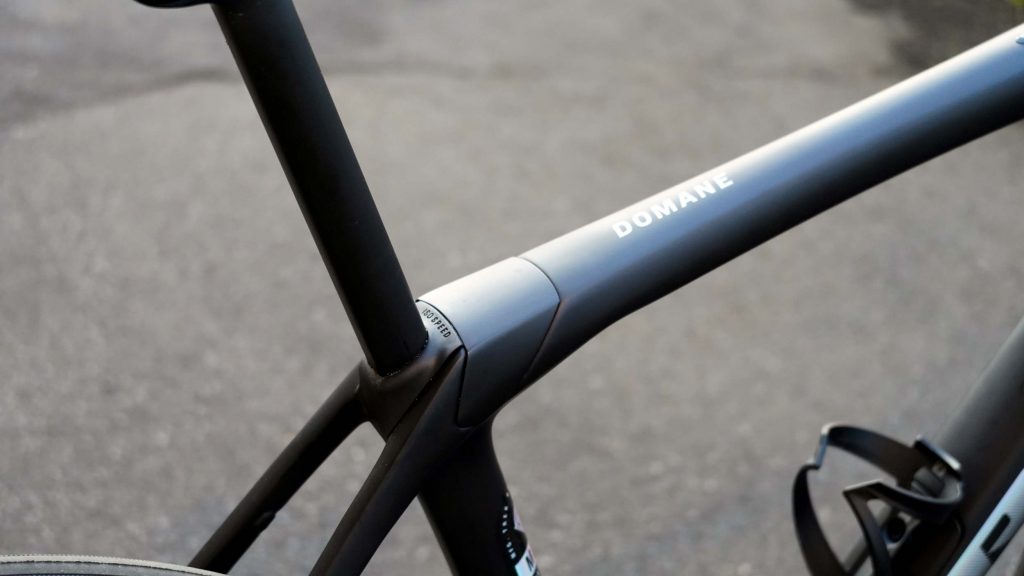 It could be that the smooth and predictable handling characteristics of the latest version of the Domane are influenced by the IsoSpeed feature, Trek’s refined innovation on what is the ‘comfort’ package in its road bike range, but for now I’ve largely ignored it other than to listen as Nash Kent put the Domane together on the workstand at Park Bikes.
It could be that the smooth and predictable handling characteristics of the latest version of the Domane are influenced by the IsoSpeed feature, Trek’s refined innovation on what is the ‘comfort’ package in its road bike range, but for now I’ve largely ignored it other than to listen as Nash Kent put the Domane together on the workstand at Park Bikes.
“The IsoSpeed system looks a bit more refined,” he said, and I nodded.
“It’s sealed a bit better,” explained Nash, who has worked on every generation of the Domane since it was launched 10 years ago. For the latest, there’s only one IsoSpeed on Gen 4, and it’s at the rear (rather than front and rear, as has been the case in the past) and, Nash adds: “There’s a cover that goes over everything which we haven’t had before.”
– Click the link below to watch the ‘Unboxing and workshop’ video of the Trek Domane. –
Perhaps I’ve benefitted from the IsoSpeed but it doesn’t scream out for attention. If it works, great. If it impacts the ride quality, it does so quietly and effectively.
Beyond that, however, there are a long list of features that impress me. Let’s start with the broad-topped forks. Not only is there ample clearance for tyres (and again, as this review progresses, I’ll experiment with Trek’s suggested limit and see how far I can push it) but there’s much more to the design than responding to market demands like that.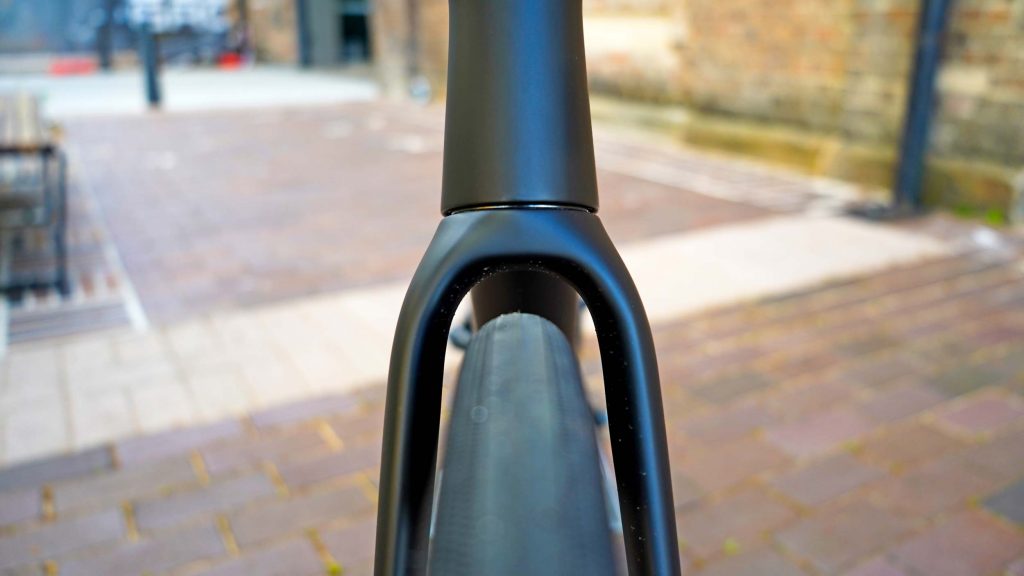 The review bike came with 32mm Bontrager R3 Hard-Case Lite tyres. Nash inflated them to 58psi, a number I suggested based on my experiences with hookless rims and tubeless tyres in the last two years.
The review bike came with 32mm Bontrager R3 Hard-Case Lite tyres. Nash inflated them to 58psi, a number I suggested based on my experiences with hookless rims and tubeless tyres in the last two years.
The Trek/Bontrager site tells me this about the 32mm tyres and the Bontrager Aeolus Pro 37 wheels:
-
- Maximum pressure: 70psi
- Tubeless ready (phew, as that’s how they are fitted)
- Sealant volume: 45ml
- 37mm rim height
- 21mm internal rim width
- 28mm external rim width
- The wheels are “Warrantied for life”, with “no rider weight limit”
But I’m missing my punchline, because I went to find the recommended tyre pressure for my weight (as I’ve used online pressure calculators before with, for example, Zipp wheels and Goodyear tyres, while Pirelli have a similar chart) but Bontrager only lists maximum for these wheels: “70psi”.
Note: there is no minimum listed for the 32mm (so please use common sense) and, interestingly, the minimum/maximum recommendation for the narrower R3 Hard-Case Lite tyres (ie. 25mm and 28mm) is 90psi/125psi.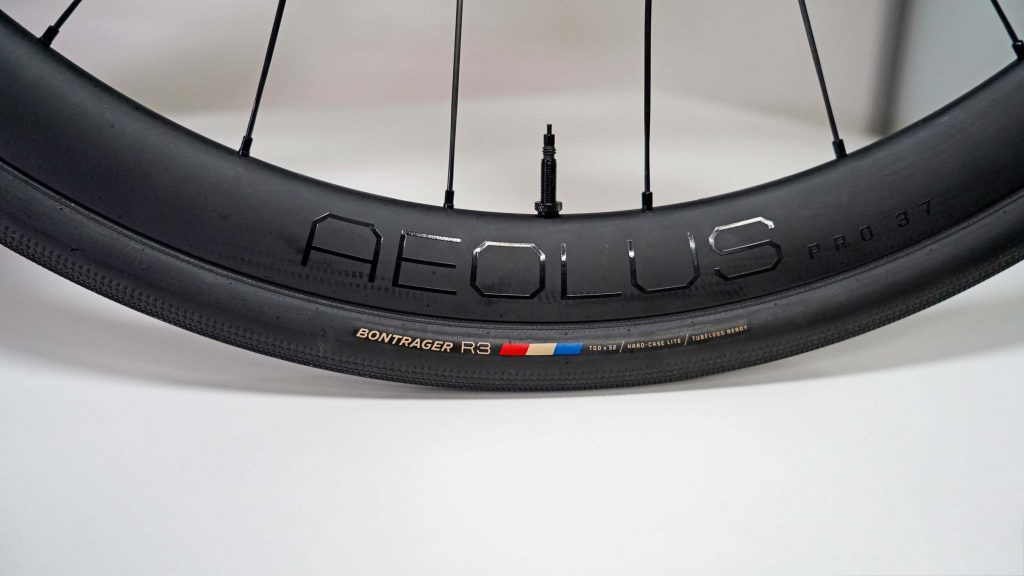 The tyres match the intentions of this bike perfectly. The aim is to provide “all day comfort” as well as some extra speed thanks to aero advantages (part of the sales pitch for Gen 4). But the biggest selling point of the Domane is, in my quick appraisal, versatility.
The tyres match the intentions of this bike perfectly. The aim is to provide “all day comfort” as well as some extra speed thanks to aero advantages (part of the sales pitch for Gen 4). But the biggest selling point of the Domane is, in my quick appraisal, versatility.
Yes, you can spend hours on this bike and not feel battered. The 32mm tyres, lower pressures, and perhaps the IsoSpeed contribute to that comfort factor. But, for me, knowing that my adventure in different locations didn’t have to end because of a gravel road (or rougher) gave me confidence to explore.
When I’m in Sydney I know where I can go without having to turn around because a road becomes a trail. But this bike took me around Wollongong for the week of the world championships and, later, the Sunshine Coast while on holidays, and more than once did I find myself on gravel and dirt… and it never bothered me.
Aero or add-ons
Much has been made of Domane’s new frame shape. The “Kammtail Virtual Foil (KVF) tube shaping and an all-new integrated cockpit for improved aerodynamics,” they say in the highlight summary in the launch documentation.
It’s what we’ve come to expect from Trek. Of course there are “improved aerodynamics” (and yes, Gen 4 is lighter and more comfortable… etc), but your intended use may vary.
One day you might want to race, the next day explore – or even go somewhere overnight… and you’ll need the convenience of being able to carry your kit. Ta dah, the Domane delivers again, not only with the neat down tube storage option, but also with top tube bag mounts (see below) and the option of mudguards.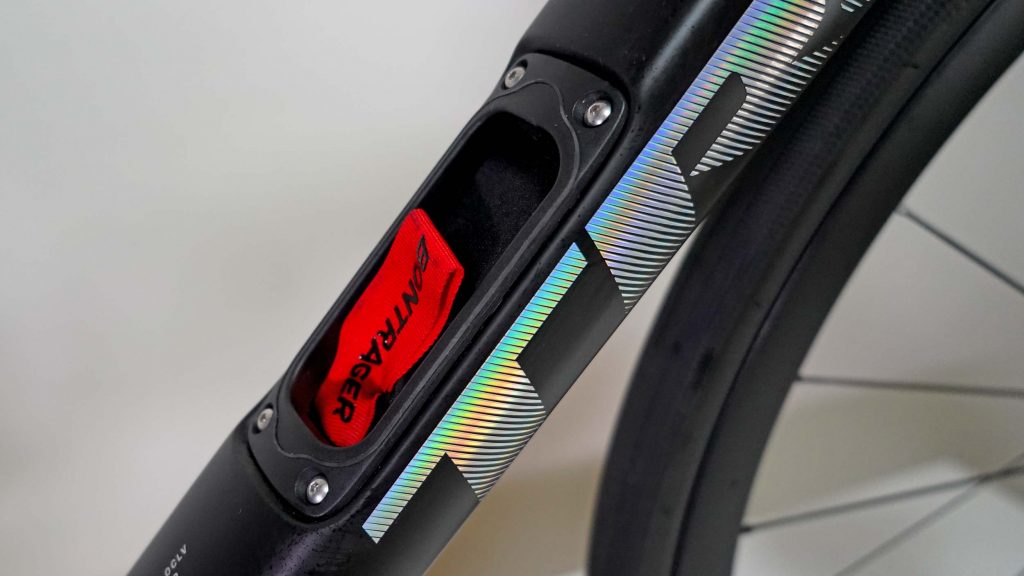
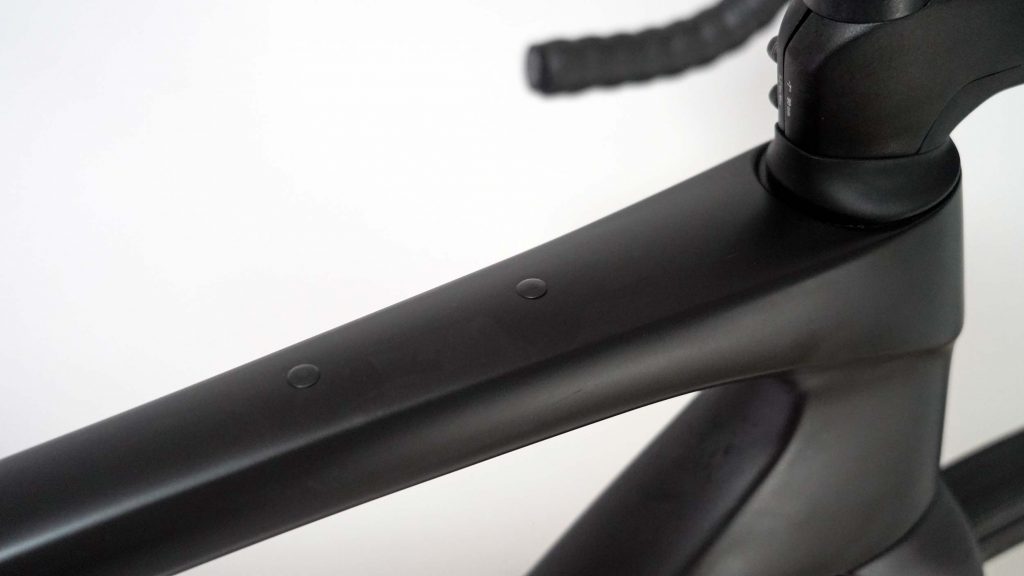
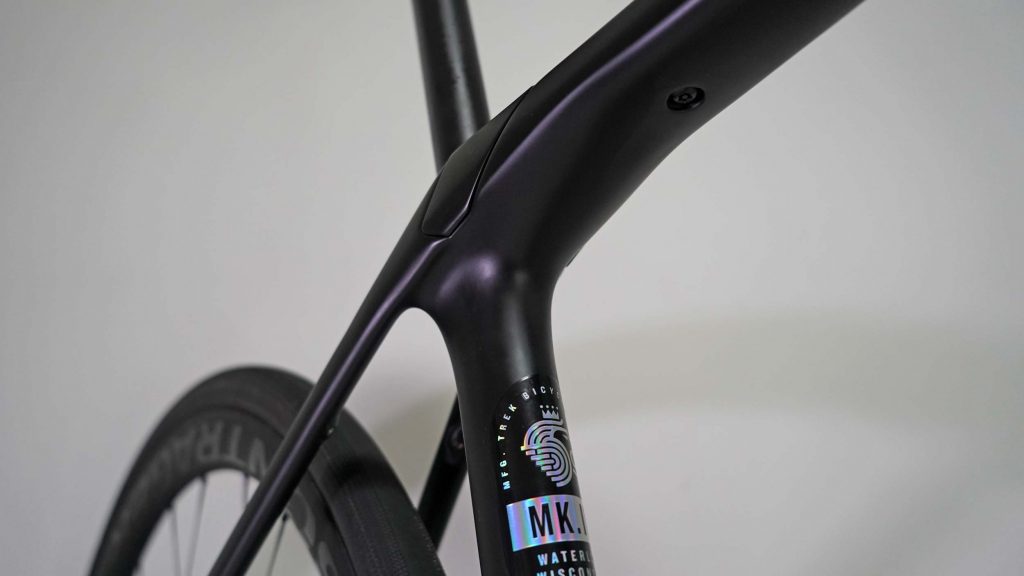 There is also a bolt underneath the top tube (above) but this is for servicing the IsoSpeed and it’s not to be confused with a bag-carrying fastener.
There is also a bolt underneath the top tube (above) but this is for servicing the IsoSpeed and it’s not to be confused with a bag-carrying fastener.
The Domane frame hasn’t quite been subjected to the numerous drillings that the aluminium of the ideal bike-packing rig, the Checkpoint ALR5 (another Trek review bike that I’ll tell you more about in the coming weeks) but it does respond to the market’s demand for accessories.
Escape the city and take in some trails. This bike will serve you well. Based on my first 1,000km of riding on the Domane, you will be comfortable and feel in control. Within the first hour, you’ll have adjusted to the more relaxed geometry and soon you’re sure to start wondering: does a road bike really need to be so responsive, so twitchy?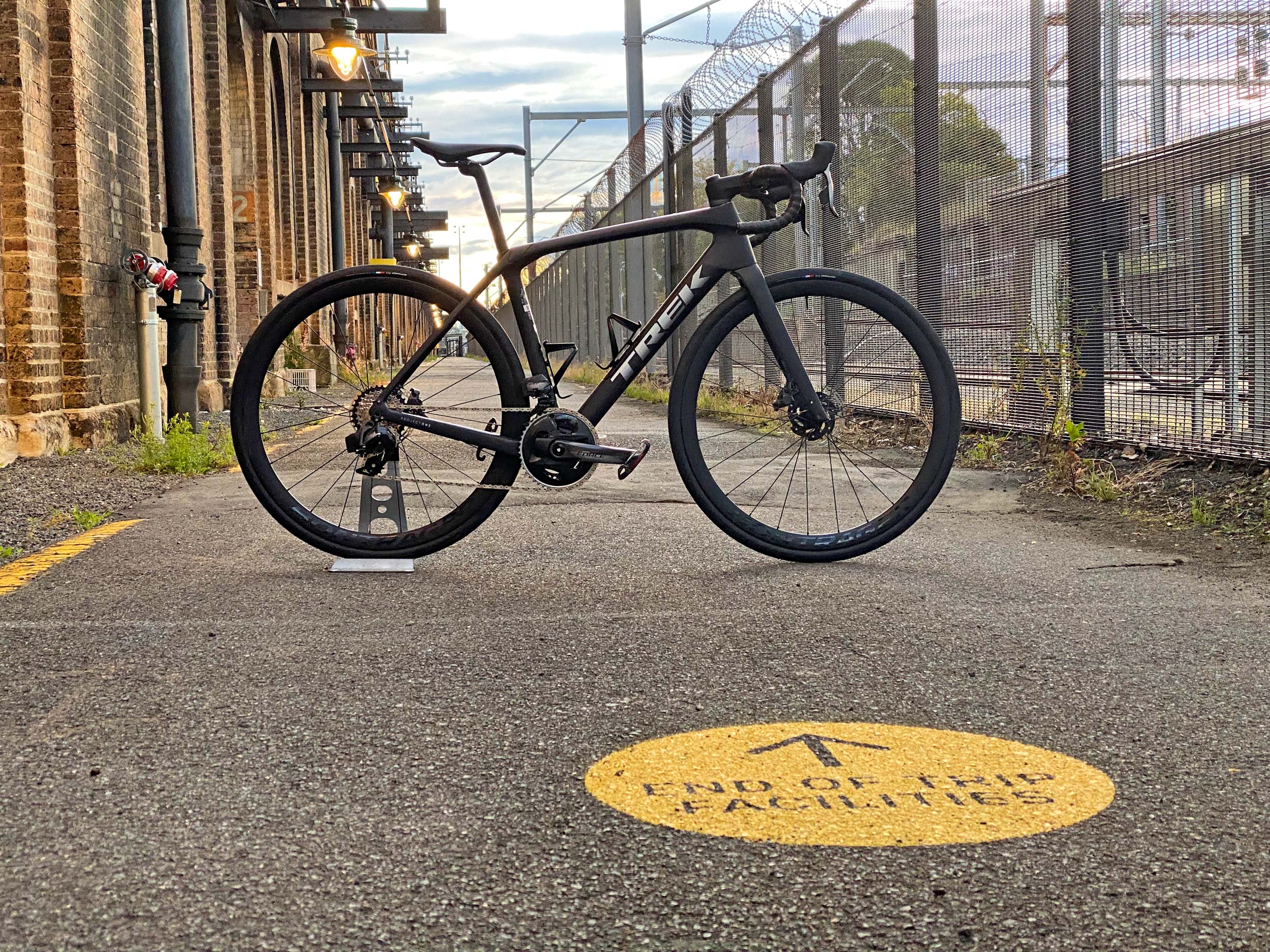
The range of road bikes…
With each Trek road bike launch the differences between the trio of offerings – Madone, Émonda and Domane – seems to diminish. The new Madone race bike is, of course, more aerodynamic (and more comfortable, and lighter). The latest Émonda is indeed lighter (and more comfortable, and more aero). And now the Domane is more comfortable… with aerodynamic and weight-saving advantages.
And so, we’re left to wonder: when will they all merge and become one?
The Ma-Ém-Do seems to be what Trek is striving for.
I’ve ridden them all over the years. I’m yet to try the new Madone (and supply chain issues continue to impact the first of the relaunched road bikes by Trek in 2022) but I do understand the benefits – and the intentions – of each in the range. Until now, the Domane has been the Trek bike I’ve ignored the most.
The early generations – with their front and rear IsoSpeed – seemed overengineered to me. Too many features, too many risks of complications, and all for minimal on-road (or trail) advantages.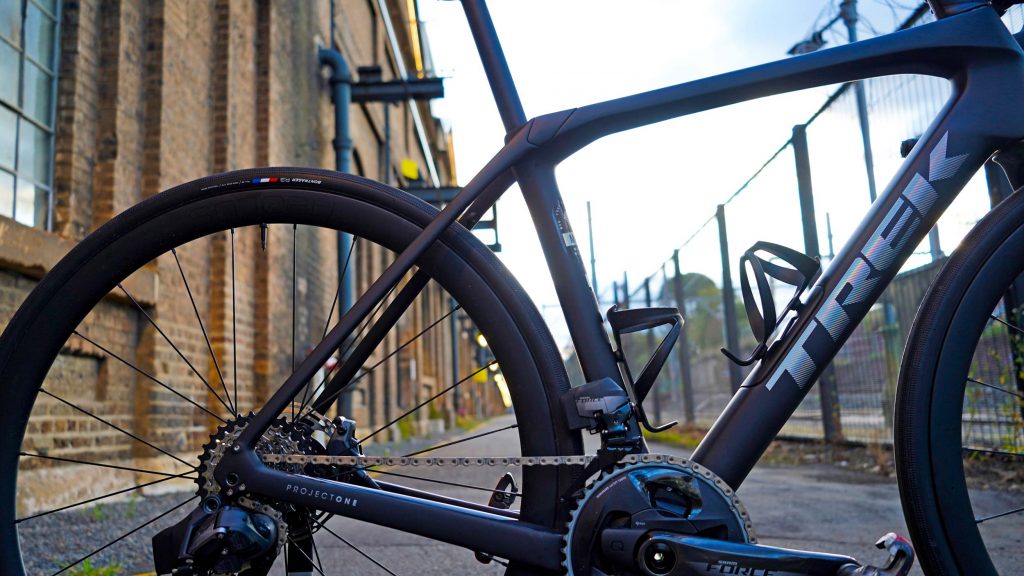 This Domane does all it’s said to do, and it does so in style (ie. it looks good) while also providing the benefits of modern trends (like bigger tyres, disc brakes, additional storage, etc). It also hums along on the road with a minimum of effort while feeling stable in situations that my own bike – the Focus Izalco Max (2019), which I love – has faltered slightly.
This Domane does all it’s said to do, and it does so in style (ie. it looks good) while also providing the benefits of modern trends (like bigger tyres, disc brakes, additional storage, etc). It also hums along on the road with a minimum of effort while feeling stable in situations that my own bike – the Focus Izalco Max (2019), which I love – has faltered slightly.
It’s a combination of elements that prompts my last statement and it relates to how this review bike handles external forces, like the road surface but, importantly, the wind.
At high speeds the Domane is a pleasure to ride, with its predictability a true asset. On steep downhills, even when there’s plenty of wind blowing, I’ve hit 80km/h or faster and the bike is stable; I feel like I’m in complete control. Not once have I had any cause for concern.
Shortly before collecting the review bike, I experienced some death wobbles on my bike (fitted with fast, deep Princeton Carbonworks wheels) and it was frightening! It didn’t cause a crash but it certainly reminded me to think about the risk vs reward of going fast… or ever faster.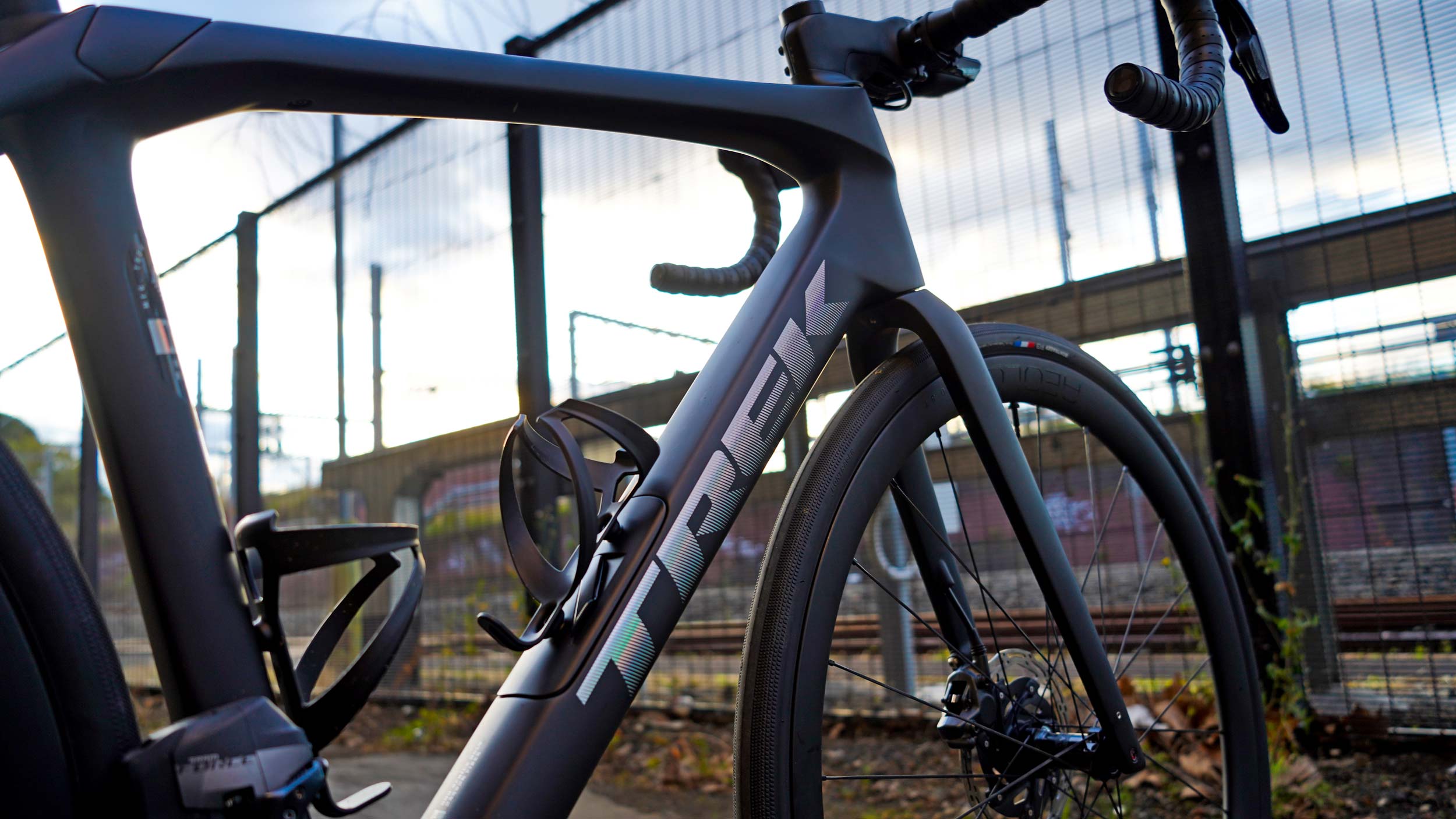
Stable in a range of situations
With 37mm rims, frame angles that are slightly more relaxed than I’m used to, and a fork that is practical (ie. offering tyre clearance) while also being attractive and aero, the Domane handles better in crosswinds than my Izalco Max. At high speed this bike sings and the wheels don’t get pushed around like others I’ve used recently.
When the bike was still in the workshop, Nash said he expected that the Domane would have a longer wheelbase than other road bikes (see comparison chart, below).
| Bike | Chainstay length | Wheelbase |
| Trek Domane (54cm) | 420mm | 1,010mm |
| Trek Émonda (54cm) | 410mm | 981mm |
| Trek Madone (54cm) | 410mm | 981mm |
| Trek Checkpoint (54cm) | 435mm | 1,041mm |
| Focus Izalco Max (Medium) | 410mm | 997mm |
There are several comments added to a couple of RIDE Media’s YouTube videos featuring the Domane where viewers have asked for more information about frame size. And it seems Trek’s site is steering customers towards larger-than-usual recommendations.
“I’m 5’9”,” writes Craig Whittle, “and Trek website is recommending the 56cm frame but all my bikes have been size 54.”
In response to Craig, Michal Waldner wrote: “This year I have purchased a Trek Emonda in size 54 despite Trek website recommending me size 56. I was able to try both sizes at my LBS and 54 fits me way better. I am also 5’9”.”
Similar sentiment has been sent in by others who are keen to find out more about sizing, and the recommendations from Trek (so far) have all been for a larger bike than what the potential customers have previously ridden.
Trek’s sizing suggestions are derived by entering various body measurements including height and leg inseam. Trek suggests using inseam (more than height alone) as the best way to calculate your optimal frame size.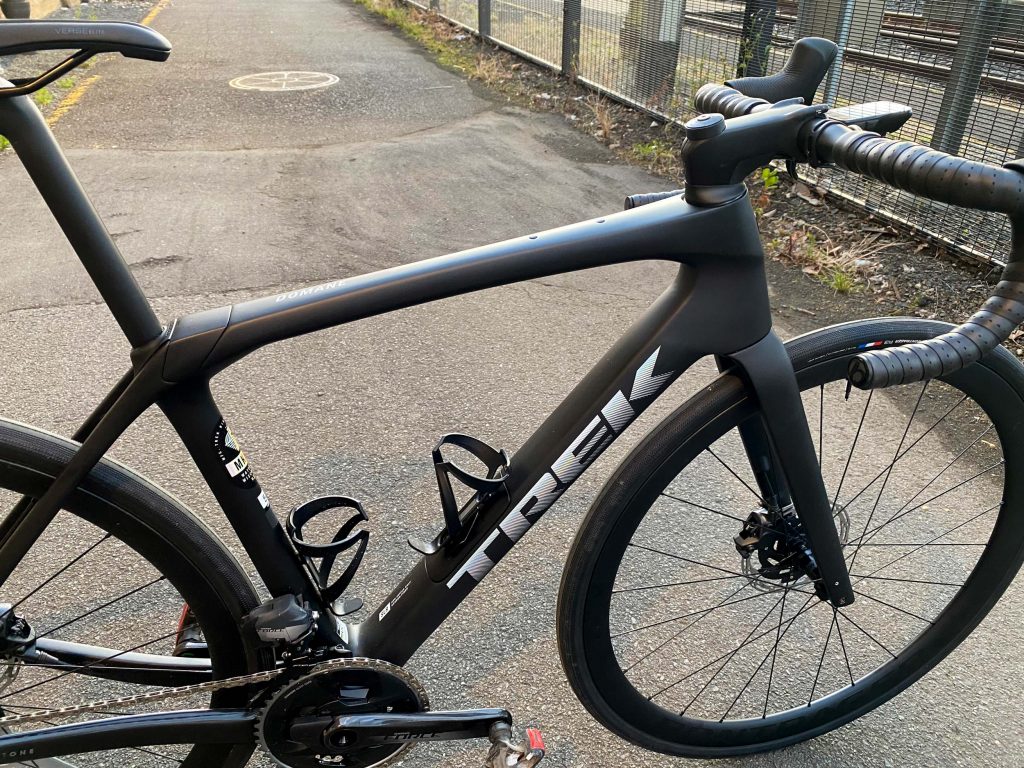 It’s also worth mentioning that Trek has listed the various stem lengths that come supplied with complete bikes, with larger bikes also getting longer stems (ie. 47cm frame = 70mm stem; 50cm = 80mm; 52 and 54cm = 90mm; 56cm and 58cm = 100mm; and 60cm and 62cm = 110mm).
It’s also worth mentioning that Trek has listed the various stem lengths that come supplied with complete bikes, with larger bikes also getting longer stems (ie. 47cm frame = 70mm stem; 50cm = 80mm; 52 and 54cm = 90mm; 56cm and 58cm = 100mm; and 60cm and 62cm = 110mm).
It was stem length that stood out the most for me once the bike came off the workstand, and it wasn’t a visual cue. The first thing I noticed when I got on the bike was how short I felt.
My saddle was positioned the same distance behind the bottom bracket as I have on my bike, but the immediate urge was to stretch out more than I could with the 90mm supplied stem. This is mentioned in my first video review (see below).
At around the 25km mark of my second ride, I pulled into a carpark and nudged the saddle back only a few millimetres on the rails and, voilà! Problem solved. I haven’t felt compromised on the Trek ever since. (Note: the supplied Bontrager Arvada Elite saddle measures 270mm tip to rear, while my Repente saddle is 280mm.)
Furthermore, with the slightly higher front end than my bike (Domane: 835mm vs Izalco Max: 820mm), we decided to build the review bike with the smallest of Trek’s supplied, integrated stem spacers. (You will also notice that, rather than the neat, Domane-specific top cap over the stem, there’s extra fork length and a round top cap… because, as this is a review bike, we left some wiggle room and didn’t cut the fork too short in case the eventual owner want a slightly higher position.)
While my bike has 2 x 10mm stem spacers (and Focus’ proprietary stem for the Izalco Max), it is still 10mm lower than the Trek Domane review bike, measuring from the ground to the centre of where the handlebars fasten into the stem.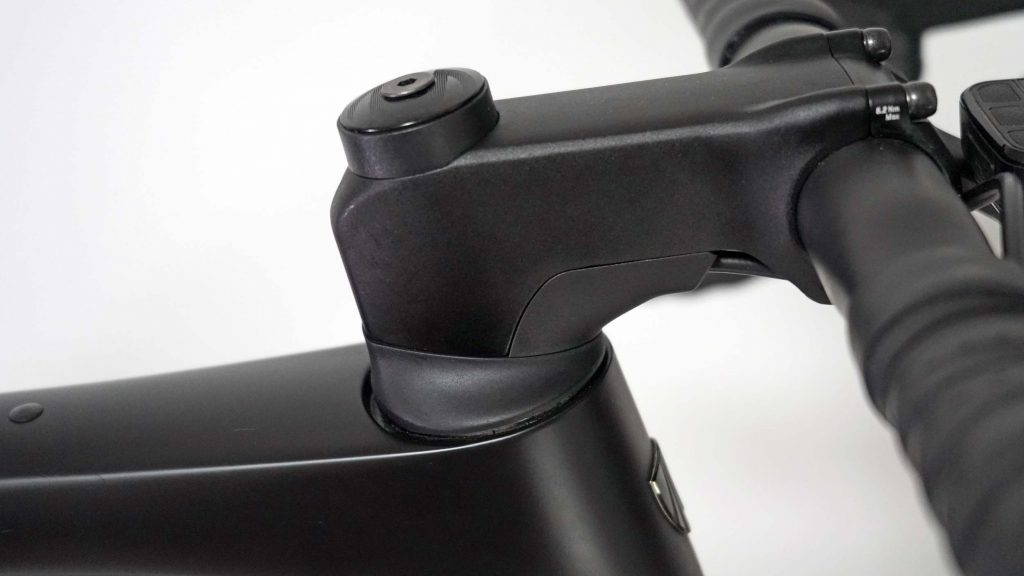
Spending longer in the drops
When I ride, I tend to switch hand position regularly: on the hoods, in the drops, and on the tops. Of course, this depends on the conditions, but I’d say my most common hand position is on the hoods… at least that’s how it has been over the last two years during the drought of review bikes.
With the Domane’s slightly higher front, I am gravitating to the drops more and more.
I consider myself to be fairly flexible, so it’s not a stretch to get into the drops on my Focus but it is certainly easier to maintain that position on this Trek. Without the slightly ergonomic flat spot that my personal Coefficient RR handlebars have, I’ve found that I nestle my hands into position slightly further towards the ends of the Bontrager Pro IsoCore’ (42cm) handlebars.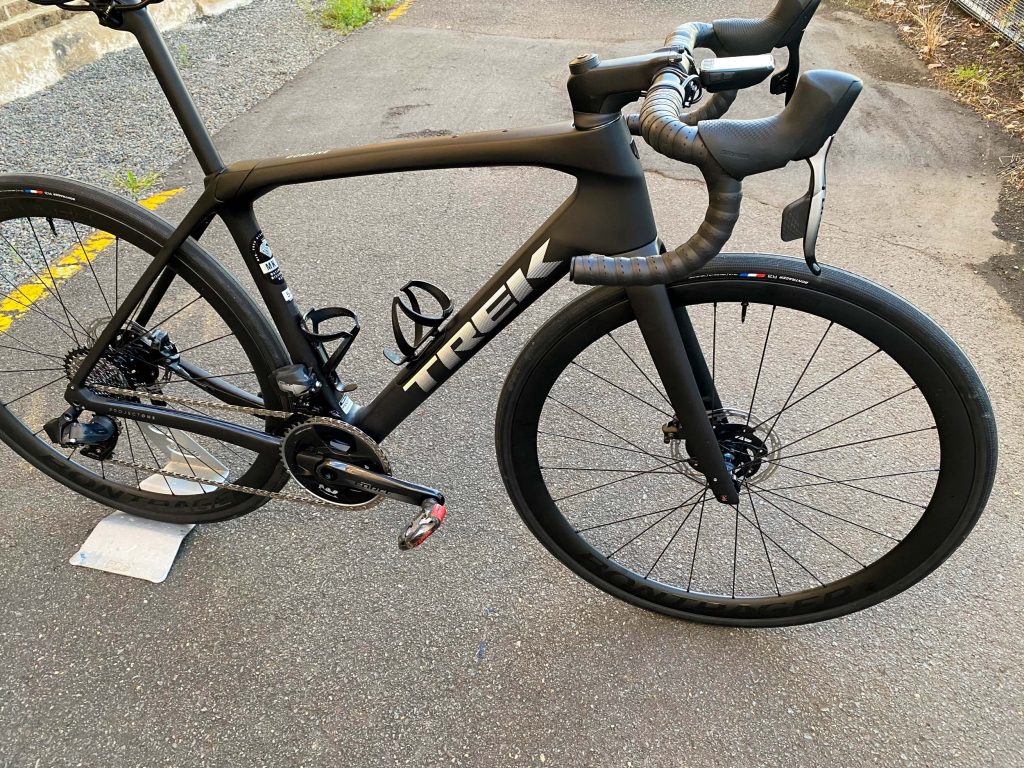 The Domane might have a longer rear end (and wheelbase) but the shorter stem impacts the fit a lot. The distance from rear of my seat to end of the lever hoods on my bike is a full 30mm longer than on the Trek.
The Domane might have a longer rear end (and wheelbase) but the shorter stem impacts the fit a lot. The distance from rear of my seat to end of the lever hoods on my bike is a full 30mm longer than on the Trek.
It’s different to my bike in many ways, but I’m comfortable on this Domane.
This is an all-day bike. It is comfortable and it does feel fast. But for me the biggest selling point is just how stable it is. It is also very versatile, and a great solution for a bike that meets many of my desires for the kind of riding I’m doing in 2022. If I wanted pure speed, I might look elsewhere in the Trek catalogue but I’m confident the latest Domane will suit more riders than the race-orientated Madone.
Trek’s ‘climbing bike’, the Émonda, might be slightly lighter and have other benefits… but, in my appraisal, the new Domane is not just a great bike for all-day comfort. It is, quite simply, a great bike. And in 2022 it is the Trek road bike that I would put at the top of my wish list.
– By Rob Arnold
*Trek’s official tyre clearance recommendations: “38mm without mudguards, 35mm with mudguards”.
Price quoted is correct in Australia as of October 2022.
More from RIDE Media on Instagram, Twitter, Facebook and YouTube.


